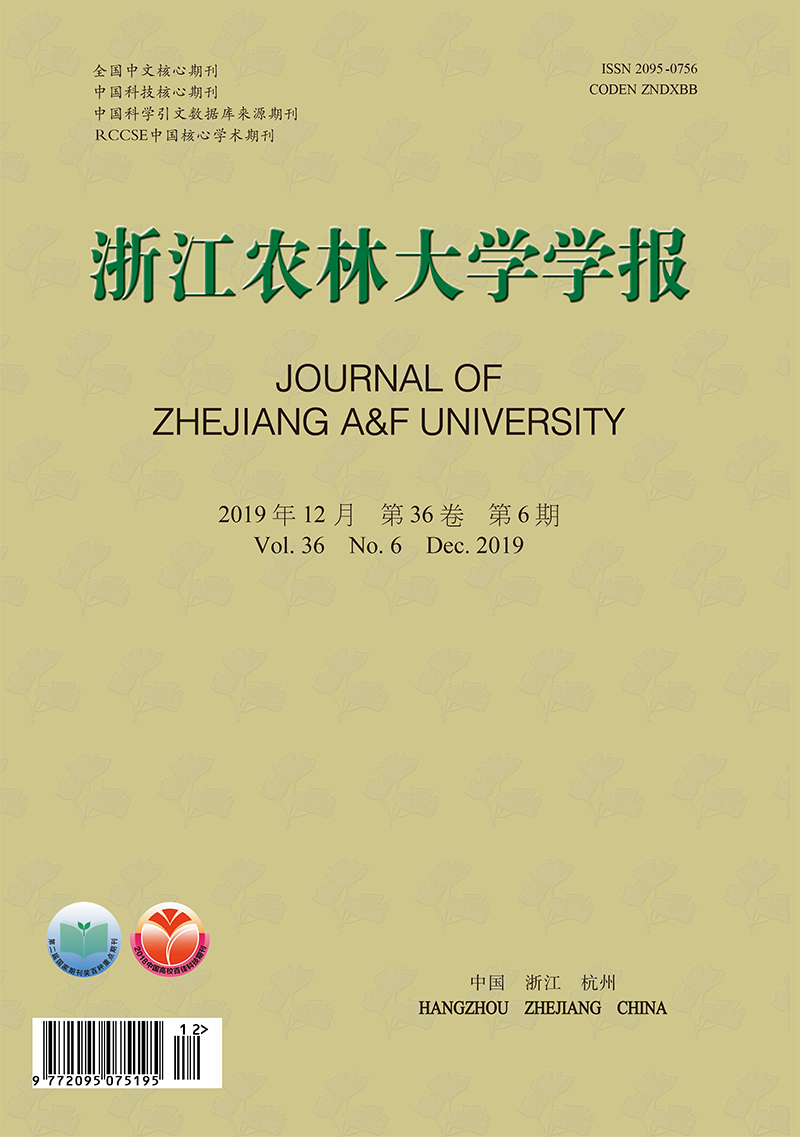Photosynthetic responses of Quercus fabri leaves to increase in CO2 concentration and temperature
国家自然科学基金重大资助项目(39899370);国家林业局重点科研项目(2001-07);湖南省自然科学基金资助项目(00JJY2024)
- Received Date: 2004-02-16
- Rev Recd Date: 2004-04-19
- Publish Date: 2004-09-20
-
Key words:
- Quercus fabri /
- net photosynthetic rate /
- transpiration rate /
- stomatal conductance /
- CO2 concentration /
- temperature
Abstract: Li-Cor 6400 Photosynthesis Measure System was used to measure the responses of photosynthetic rate , transpiration rate and stomatal conductance of Quercus fabri to increase in CO2 concentration and temperature .The findings showed that net photosynthetic rate of Quercus fabri increased when the CO2 concentration was increased in a very short time .When CO2 concentration was 290 -450 molmol-1 , the light compensation point (PLC), light saturation point (PLS), and maximun net photosynthetic rate (Amax)were 90 -100 , 1 500 -1 700 and 5.5 -8.2 molm-2s-1 , respectively .When CO2 was increased to 700 molmol-1 , PLC and PLS decreased to 10 molm-2s-1 and 1 300 molm-2s-1 , but Amax increased to 10.6 molm-2s-1 .The optimum temperature for the photosynthesis of Quercus fabri in spring was 24 ℃ and the corresponding PLS and Amax were 800 molm-2s-1 and 9.9 molm-2s-1 respectively .The optimum temperature in summer was 28 ℃ and the corresponding PLS and Amax were 1 700 molm-2s-1 and 12.8 molm-2s-1 .The change of CO2 curve at 24 ℃ was similar to that at 28 ℃.When the temperature was increased to 32 ℃, the compensatio point , saturation point and net photosynthetic rate decreased .The changes of CO2 curve at 32 ℃, 36 ℃ an 40 ℃ were similar .When the temperature was changed in a wide range , the interaction between it and CO2 concentration was significant . Transpiration rate and stomatal conductance of leaves showed the same changing rules .They increased with the increase in the effective photosynthetic radiation and decreased with the increase in CO2 concentration .The effect of light intensity on transpiration rate and stomatal conductance at low CO2 concentration were greater than those at high concentration .Temperature was the main factor effecting the transpiration rate .The transpiration rate of Quercus fabri in spring was closely related to the stomata regulated by photosynthesis .In summer , however , the transpiration response to temperature greatly reflected the energy balance .Temperature and CO2 interacted with each other .At the temperature of 24 ℃, the range of transpiration rate and stomatal conductance responded to CO2 concentration was rather small.At 28 ℃, transpiration rate and stomatal conductance decreased with the increase in CO2 concentration .At 32 ℃, 36 ℃ and 40 ℃, the responses of transpiration rate and stomatal conductance took on shapes of parabolas .[ Ch , 4 fig .20 ref .]
| Citation: | XIANG Wen-hua, TIAN Da-lun, YAN Wen-de, et al. Photosynthetic responses of Quercus fabri leaves to increase in CO2 concentration and temperature[J]. Journal of Zhejiang A&F University, 2004, 21(3): 247-253. |









 DownLoad:
DownLoad: